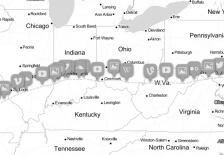A breakdown of the Publishers' Toolbox from Knight Lab

Knight Lab's Publishers' Toolbox offers five different, swift assets for telling multimedia stories. A site editor can access the toolbox to create interactive story timelines and maps, inline audio and content comparisons, and also offers a new way to search Twitter.
You don't need a deep understanding of code to use these tools. The Washington Post, Al Jazeera, and many other major media outlets are already using them as part of their web packages, and they're just as accessible to independent digital publishers.
SoundciteJS allows users to add an audio clip over a piece of text, just as you would a link. The audio clips can originate from a Soundcloud account or anywhere else the mp3 is stored, and with Soundcite, you can place start and end times on the clip. You're left with an embed code, which goes in place of the URL in linked text. Here is an example used in a Pitchfork review of Tame Impala.
StoryMapJS is useful for location-based stories. The writer can place a range of content on a large map, such as video, text, images, and tweets. You'll need a Google account to use the application. Here is how Al Jazeera used it for a story on Malyasia Airlines Flight 370.
The application twXplorer is meant to go deeper than your average Twitter term or hashtag search. A user starts by logging in to Twitter, then after searching for a term, you get a list of different terms surrounding the topic and how often they appear, recent tweets, hashtags, and links. Try it.
JuxtaposeJS is a straightforward slider app that compares two pieces of content. You'll need URLs to two uploaded images and a short caption. It is not customizable.
TimelineJS creates an interactive narrative for the reader. As in StoryMapJS, a user can display a range of content in each story. This platform brings out potential in stories with a strong chronology. See how the Denver Post used the app in its depiction of the events leading up to the Aurora, Colorado movie shooting of July 2012.


